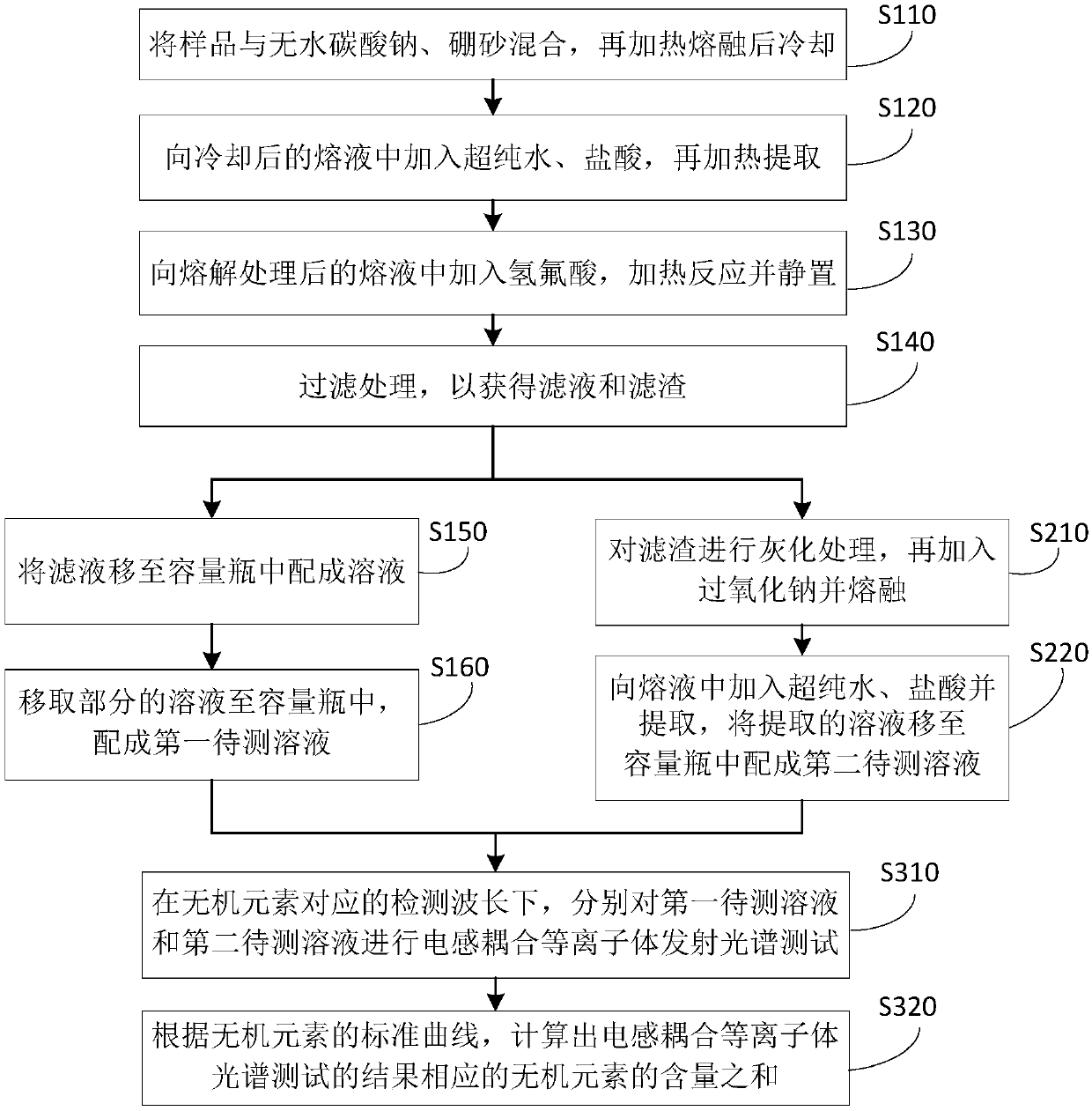Method for detecting content of inorganic elements in sample of lithium lanthanum zirconium oxide type solid electrolyte
A solid electrolyte and inorganic element technology, applied in the field of analytical chemistry, can solve the problems of unpublished literature reports or test standards, and achieve the effect of simple operation and high data accuracy
- Summary
- Abstract
- Description
- Claims
- Application Information
AI Technical Summary
Problems solved by technology
Method used
Image
Examples
Embodiment 1
[0075] In this example, detection of Li 7-x La 3 Zr 2-x Ta x o 12 Li, La, Zr and Ta contents in samples of (LLZTO) solid electrolyte. The specific method is as follows:
[0076] (a) Weigh 0.1000g of sample into a platinum crucible, add 3g of anhydrous sodium carbonate-borax (mass ratio: 2:1) mixed flux, stir well and then cover 1g, then put the platinum crucible into the temperature rise to 900°C In a muffle furnace, rise to 1000 ° C for 30 minutes to melt;
[0077] (b) After the platinum crucible in step (a) is slightly cooled, take it out from the muffle furnace and put it into a 50mL polytetrafluoroethylene beaker, add 25mL ultrapure water and 10mL hydrochloric acid, and put it on a heating plate at 200°C extract on
[0078] (c) After taking out the platinum crucible, add 10mL of hydrofluoric acid, continue heating for 20min, take it out, and let it stand for 2 hours;
[0079] (d) Filter the solution after the reaction is left to stand in a 100mL plastic volumetric ...
PUM
 Login to View More
Login to View More Abstract
Description
Claims
Application Information
 Login to View More
Login to View More - R&D
- Intellectual Property
- Life Sciences
- Materials
- Tech Scout
- Unparalleled Data Quality
- Higher Quality Content
- 60% Fewer Hallucinations
Browse by: Latest US Patents, China's latest patents, Technical Efficacy Thesaurus, Application Domain, Technology Topic, Popular Technical Reports.
© 2025 PatSnap. All rights reserved.Legal|Privacy policy|Modern Slavery Act Transparency Statement|Sitemap|About US| Contact US: help@patsnap.com


